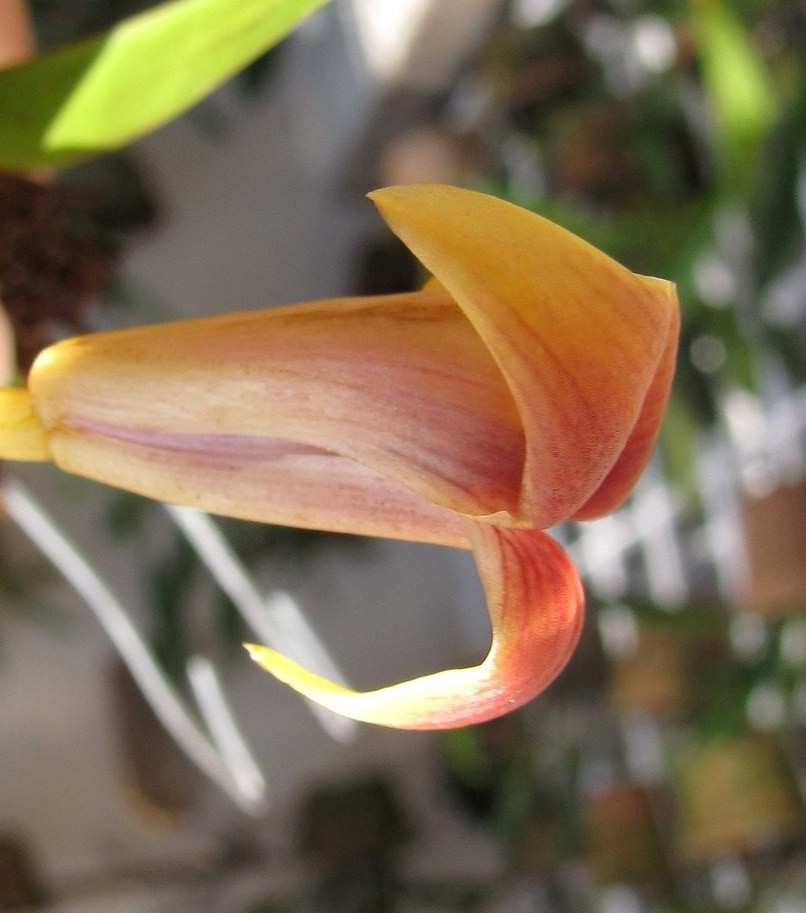Blue-leaved trigonidium
(Maxillaria obtusa)

Description
Trigonidium obtusum is about 15 cm (5.9 in) tall with short flower stems. The pseudobulbs of the plant are compressed and oblong, with two lanceolate leaves. The scapes spring from the rhizome, and each scape ends with a single flower. The flower is yellowish to pinkish with purple veins and blue eyespots. The flower is approximately 1 cm (0.39 in) wide with sepals that are broader and taper less than other species. Flower development takes ten days, and flowers wither four to ten days after opening. During the hottest hours of the day, the flowers release a sweet fragrance similar to lemon. Pentadecane is the main component of the fragrance. Male Plebeia droryana bees pollinate the flowers by performing pseudocopulation. Bees become trapped in the tubular orchid after being attracted by the sepals or petals of the flower. Two types T. obtusum flowers exist, one with attractive sepals and one with attractive petals. The flowers are morphologically identical besides the sepals and flowers, and most likely discourage self-pollination by hindering the process of bee learning. Pollination of T. obtusum is unique in the fact that pollination does not only require pseudocopulation but also trapping the male bee. Bees carrying pollinarium occasionally revisit the same flower, but self-pollination does not occur. Though pentadecane produces the fragrance of the flower, pentadecane itself does not attract P. droryana bees. Trigonidium, abbreviated as Trgdm in horticultural trade, is a genus of orchids comprising roughly twenty species found from Mexico to Brazil. The epiphytes and lithophytes of the genus have long or short rhizomes. Its pseudobulbs are cylindrical or ovoid with overlapping sheathes at their base and one or two leaves at their apex. The inflorescences of the genus are basal, erect, and single flowered, with the flower usually as long or longer than the leaves. The flowers are tubular at the base with sepals spreading. The sepals are larger than the petals and the petals are larger than the lip. The lip is trilobed and not spurred. The flowers have shiny pads and eyespots that lure male bees to perform pseudocopulation with the blossoms. Trigonidium derives from the Greek "trigonon", meaning "triangle", in reference to the triangular shape of the flowers. Plants of the genus grow well in pots with standard epiphyte mix, in intermediate conditions with light shade and high humidity.
Taxonomic tree:







